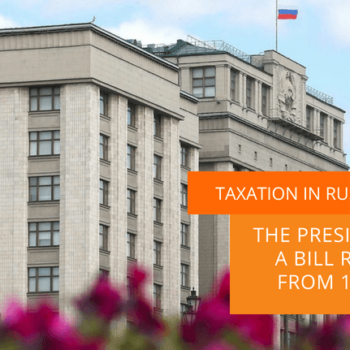
- Jon Hellevig
- June 22, 2018
- 2347
Russia’s Q1 GDP growth was 5.8%, but government reports 1.3%
Having successfully adapted to the sanctions onslaught and fueled by growing oil prices Russia’s GDP surged in real terms by 5.8% in the first quarter of 2018. But the Russian government has decided to downplay the success by reporting an understated GDP growth of merely 1.3% even in the face of a string of other excellent economic indicators.
Thing is that the nominal growth in Q1 was 8.2%. Nominal growth is reduced by the rate of inflation to give the so-called “real growth.” As the inflation for the period was 2.4%, this would give a 5.8% growth. Why then did the government decide to report the low 1.3%. We don’t know if the government wants to play it safe or if they actually don’t get it. Let’s see how they reason it.
The idea with reporting “real growth” net of inflation is to show how much the economy has grown above the general increase of prices. But what then made the Russian government deduct 6.8% from the nominal figure instead of the 2.4% inflation rate? It is entirely possible that they merely blindly follow the faulty conventions of the international national economy accountants. According to the esoteric ideas of those accountants, you would strive to identify the physical output behind the actual monetary figures. And to do this, they not only deduct the general inflation rate but actually tinker with every product class to apply their fancy theories.
Now, a big part of the Russian Q1 GDP growth came from the rise of oil and gas prices without a corresponding rise in the volumes of the extracted resources. So, what our accountants did then, is to deduct the whole price rise from the GDP growth. The feat is performed by establishing a so-called GDP deflator, which is used for subtracting the actual growth with the part of growth that the accountants don’t like. The deflator would normally be in line with inflation but was now set at a staggering 6.8%.
GDP is supposed to measure value not volume
What happened is that Russia raked in huge increases in oil and gas revenue, which indeed increased the GDP, but because the Russian statisticians cannot find the volume growth they discard it. That is as wrong as it could be. This approach totally ignores the essence of GDP, which is the total value of the goods and services produced in a national economy. Yes, value, not volume. Therefore, if the value increases, then that is a GDP increase. We understand, that you would deduct the general inflation from the increase to show separately the additional production as opposed to an increase in the general level of prices.
We may compare this, for example, with the situation of Germany getting increased revenue for exporting of its cars. You can bet that all the price increases on that directly corresponds with GDP growth. If nothing else it would be motivated by some hypothetical improvement in the quality of the car, say a new button on the backseat for tweaking the air conditioner.
In general, the quest to try to identify the physical volumes behind GDP growth is outdated as the bigger share of GDP anyway is in the service sector where the output at the end of the analysis is intangible and can really be measured only in monetary terms.
The good thing is that whatever the accountants have done to produce these artificially low growth figures, they cannot wish away the actual real-real growth. The fact is that the GDP grew 8.2% in the first quarter and is therefore so much higher than before. When we deduct the inflation from this we get the nice-to-know figure of how much the economy grew above inflation. Everything else is accounting speculation. Too bad, though, that this kind of official reporting hampers Russia’s investment appeal.
Strong economic indicators
All the other main economic indicators confirm our view that there has been strong growth with an accelerating trend. Industrial production in Q1 was up by 1.9% further reaching 3.2% by May.
In the period, exports increased by 26%.
Capital investments grew by 4.2 to 4.4% each month January through March.
Salaries surged ahead with a 12% nominal growth giving a hefty 9.5% inflation adjusted growth. In the same time, real disposable income grew by 3%. Increased household purchasing power was confirmed by a 2.2% rise of retail sales. At the same time unemployment stayed at record lows of 5%.
All these figures indicate a much higher GDP growth than the miserly official 1.3%. Quite a lot of imagination must have gone into conjuring up that magic deflator, which wiped out all the growth. Why?
There’s the American way or reporting, too
Russia’s self-effacing GDP reporting comes in marked contrast to the behavior of the US Government, which is known to use every trick in the book to make its failing economy appear stronger and healthier than it is. Just in April, Awara came out with a report titled “Signs that the US Debt-Fueled Economy Might Actually Collapse.” The report details the dubious accounting practices of understating inflation, inflating GDP growth figures, and making a large chunk of US national debt disappear from the records.


